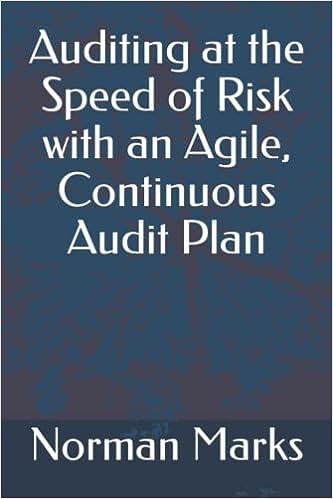For the focus of interest from part 2, develop an EARe functional design, and generate associated visualizations of it such as its ER diagram and data dictionary. You should use EARe Studio to complete and validate your work. Tips: Refer to EARe Depths and EARe Practices for notational conventions and phrasing suggestions Study the generated data dictionary to ensure each "Usage" line reads like a descriptive statement, with meaning specific to its purpose in your focus. As needed, refine attribute names, relationships, or cardinalities. J. Additional requirements: . In the EARe design: o Include about a half-dozen data entities with several attributes each o Relationships should include each of the common cardinalities 1:1, 1:many, and many:many The EARe design should validate through EARe design level 1 (functional), with no warnings from EARe Studio o Common errors include "asymmetric" entities, usually from typos or from missing the other side of a relationship Try the different ERD layout directions LR/TD/RL to find which best fits your design vision (and clarifies relationships) Revisit: Have you addressed all feedback for this part? . Consider: How did you refine your functional design from part 2 as you iteratively developed its EARe design and associated ERD? For credit, submit: (as text) How you addressed feedback or refined your functional design for this submission, including comments on any unresolved EARe Studio warnings (as an image) The generated ER diagram, saved from EARe Studio . (as a file) The generated data dictionary, saved from EARe Studio (as an EAReStore file) The EARe design Example: Open the provided EAReStore file to explore this example. Note this example is a work in progress (WIP). Consider: Design warnings help identify problem areas. Practice correcting them. The data dictionary describes usage based on cardinalities and relationship descriptions. Practice correcting these to "read" sensibly for your focus. A proper ER diagram will have symmetric (two-way) relationships (no unreferenced entities) with purposeful relationship descriptions

For the focus of interest from part 2, develop an EARe functional design, and generate associated visualizations of it such as its ER diagram and data dictionary. You should use EARe Studio to complete and validate your work. Tips: - Refer to EARe Depths and EARe Proctices for notational conventions and phrasing suggestions - Study the generated data dictionary to ensure each "Usage" line reads like a descriptive statement, with meaning specific to its purpose in your focus. As needed, refine attribute names, relationships, or cardinalities. Additional requirements: - In the EARe design: - Include about a half-dozen data entities with several attributes each - Relationships should include each of the common cardinalities 1:1, 1:many, and many:many - The EARe design should validate through EARe design level 1 (functional), with no warnings from EARe Studio - Common errors include "asymmetric" entities, usually from typos or from missing the other side of a relationship - Try the different ERD layout directions LR/TD/RL to find which best fits your design vision (and clarifies relationships) - Revisit: Have you addressed all feedback for this part? - Consider: How did you refine your functional design from part 2 as you iteratively developed its EARe design and associated ERD? For credit, submit: - (as text) How you addressed feedback or refined your functional design for this submission. including comments on any unresolved EARe Studio warnings - (as an image) The generated ER diagram, saved from EARe Studio - (as a file) The generated data dictionary, saved from EARe Studio - (as an EAReStore file) The EARe design Example: Open the provided EAReStore file to explore this example. Note this example is a work in progress (WIP), Consider: - Design warnings help identify problem areas. Practice correcting them. - The data dictionary describes usage based on cardinalities and relationship descriptions. Practice correcting these to "read" sensibly for your focus. - A proper ER diagram will have symmetric (two-way) relationships (no unreferenced entities) with purposeful relationship descriptions For the focus of interest from part 2, develop an EARe functional design, and generate associated visualizations of it such as its ER diagram and data dictionary. You should use EARe Studio to complete and validate your work. Tips: - Refer to EARe Depths and EARe Proctices for notational conventions and phrasing suggestions - Study the generated data dictionary to ensure each "Usage" line reads like a descriptive statement, with meaning specific to its purpose in your focus. As needed, refine attribute names, relationships, or cardinalities. Additional requirements: - In the EARe design: - Include about a half-dozen data entities with several attributes each - Relationships should include each of the common cardinalities 1:1, 1:many, and many:many - The EARe design should validate through EARe design level 1 (functional), with no warnings from EARe Studio - Common errors include "asymmetric" entities, usually from typos or from missing the other side of a relationship - Try the different ERD layout directions LR/TD/RL to find which best fits your design vision (and clarifies relationships) - Revisit: Have you addressed all feedback for this part? - Consider: How did you refine your functional design from part 2 as you iteratively developed its EARe design and associated ERD? For credit, submit: - (as text) How you addressed feedback or refined your functional design for this submission. including comments on any unresolved EARe Studio warnings - (as an image) The generated ER diagram, saved from EARe Studio - (as a file) The generated data dictionary, saved from EARe Studio - (as an EAReStore file) The EARe design Example: Open the provided EAReStore file to explore this example. Note this example is a work in progress (WIP), Consider: - Design warnings help identify problem areas. Practice correcting them. - The data dictionary describes usage based on cardinalities and relationship descriptions. Practice correcting these to "read" sensibly for your focus. - A proper ER diagram will have symmetric (two-way) relationships (no unreferenced entities) with purposeful relationship descriptions







